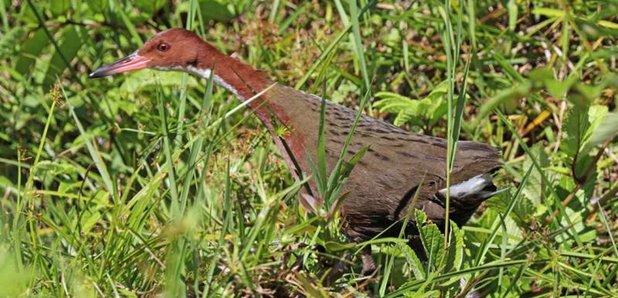Portsmouth Scientists Discover Bird That Came Back From The Dead
10 May 2019, 15:19 | Updated: 10 May 2019, 15:22

A flightless bird that became extinct when its home island became flooded by the sea "came back to life" when a similar species evolved in the same location, scientists have discovered.
Researchers from the University of Portsmouth and the Natural History Museum found that a species of rail successfully colonised an isolated atoll called Aldabra in the Indian Ocean on two occasions separated by tens of thousands of years.
And on both occasions, the white-throated rail - indigenous to Madagascar - evolved completely independently to become flightless.
The last surviving colony of the flightless rails is still found on the island.
A University of Portsmouth spokesman said: "This is the first time that iterative evolution - the repeated evolution of similar or parallel structures from the same ancestor but at different times - has been seen in rails and one of the most significant in bird records."
He explained that the rail species are persistent colonisers that would migrate from Madagascar during frequent population explosions.
One group colonised the Aldabra atoll and because of the lack of predators, like the dodo of Mauritius, they evolved in a way that they lost the ability to fly.
He explained: "Aldabra disappeared when it was completely covered by the sea during a major inundation event around 136,000 years ago, wiping out all fauna and flora including the flightless rail.
"The researchers studied fossil evidence from 100,000 years ago when the sea-levels fell during the subsequent ice age and the atoll was recolonised by flightless rails.
"The researchers compared the bones of a fossilised rail from before the inundation event with bones from a rail after the inundation event.
"They found that the wing bone showed an advanced state of flightlessness and the ankle bones showed distinct properties that it was evolving toward flightlessness.
"This means that one species from Madagascar gave rise to two different species of flightless rail on Aldabra in the space of a few thousand years."
Dr Julian Hume, avian paleontologist at the Natural History Museum, said: "These unique fossils provide irrefutable evidence that a member of the rail family colonised the atoll, most likely from Madagascar, and became flightless independently on each occasion.
"Fossil evidence presented here is unique for rails, and epitomises the ability of these birds to successfully colonise isolated islands and evolve flightlessness on multiple occasions."
Co-author of the study published in the Zoological Journal of the Linnean Society, Professor David Martill - from the School of Earth and Environmental Sciences at the University of Portsmouth, said: "We know of no other example in rails, or of birds in general, that demonstrates this phenomenon so evidently.
"Only on Aldabra, which has the oldest palaeontological record of any oceanic island within the Indian Ocean region, is fossil evidence available that demonstrates the effects of changing sea levels on extinction and recolonisation events.
"Conditions were such on Aldabra, the most important being the absence of terrestrial predators and competing mammals, that a rail was able to evolve flightlessness independently on each occasion."






















